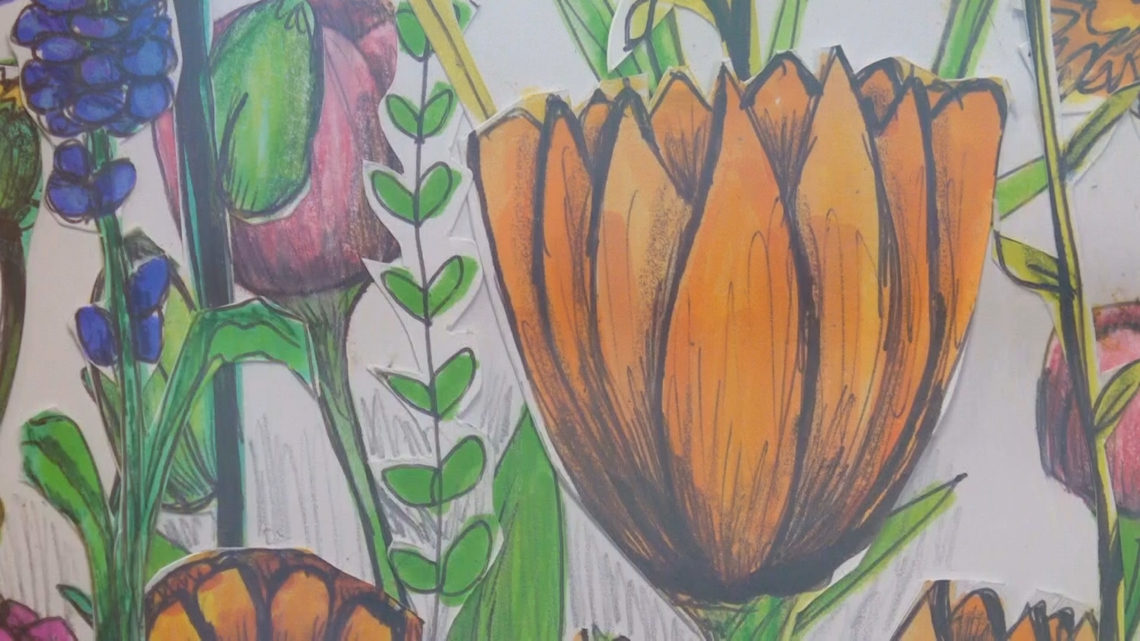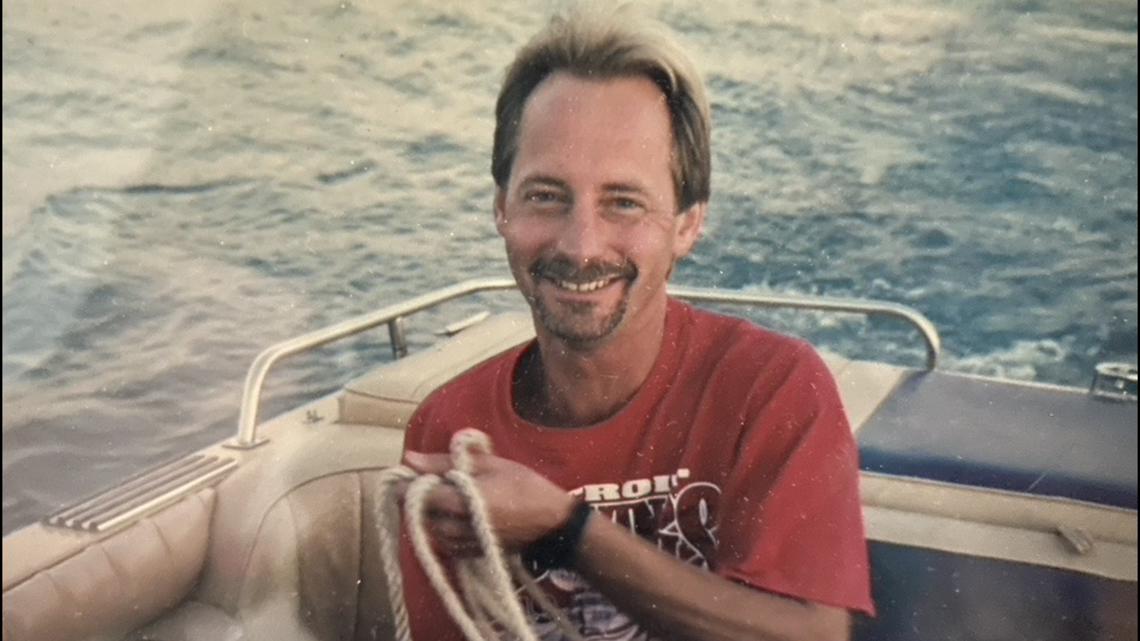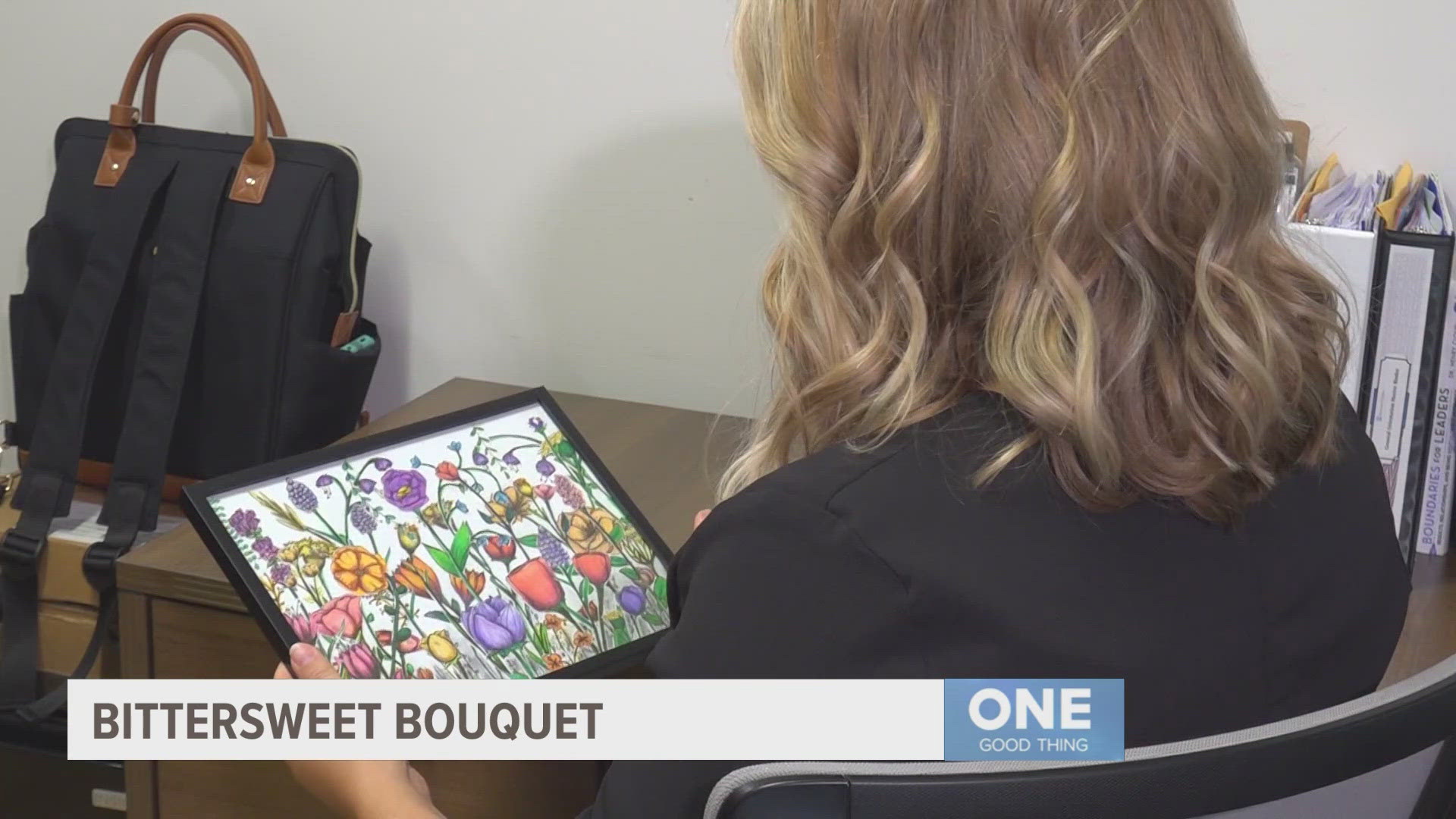GRAND RAPIDS, Mich. — For the most part, Kaitlyn Dawson’s desk at the Emmanuel Hospice office is exactly what you’d expect it to be. On her left, she has office supplies, while an artificial potted plant and a jar of candy sit to her right.
But it’s what’s on the wall over her left shoulder that really gives this workspace character. Inside three separate picture frames are hundreds of flowers. Kaitlyn was an art major at Grand Valley State University before she switched to social work, and she still has a passion for creativity. Every one of those flowers – whether red, purple or orange - was her creation.
“I would just start drawing and whatever came out was what it was. I didn't think of a specific flower. Some of them are probably made up and ambiguous. Some of them probably represent real flowers,” Kaitlyn said.
Chances are, you’ll think these flowers are even more beautiful when you know the story behind them.
“These flowers represent patients that I have been able to be a part of their journey at end of life,” said Kaitlyn, who has worked in hospice for about four years.
“I had one particular case that was really difficult, and I remember leaving that visit and thinking ‘I'm going to start doing this process in honor of her.’ And I went to the store and I bought pencils and a notebook and decided I was going to do flowers. It was easy. It was simple. It was something I could sit down and do in the evening, and if I lost a couple of people that day, I could draw a couple of flowers.”
Before Kaitlyn knew it, she had a "bittersweet bouquet."


“It’s allowed closure for me. You are entering into a space that's very intimate and special with family members and, of course, the patients themselves. So, it's only human that you're going to feel things and be attached and have empathy and compassion,” Kaitlyn said.
“All of that is something that makes you a good caregiver, but it can also take a toll if you don't take time to honor it and pay attention to that. So, this practice really became a way where I could do that. I could have closure. I could heal and keep going so that I could continue to be a part of other patients' lives.”
Honoring her own grief has helped Kaitlyn not just professionally, but personally as well.
“My dad's name was Mark, and he grew up in the metro Detroit area. He worked in electronics as an electronic technician, back when VCRs and camcorders and digital cameras were a thing. He just had a really great sense of humor. He loved to laugh,” she said.
“He lived a hard life. He had [multiple sclerosis], and was diagnosed when I was little, and battled that for almost 25 years. He died in 2022 and it was a long, long journey.”
During our interview with Kaitlyn, she shared how impressed she was by her father’s strength. He loved to water ski and to run. And when MS took away his ability to do those things, he remained strong in his faith.


Kaitlyn is keeping her dad’s memory alive, just like she does with her patients. Initially, the bittersweet bouquet was a private way for her to grieve. But when her role at Emmanuel Hospice changed, she opened up about the artwork’s meaning.
“I am the education manager. I help bring in new staff and orient them to not only hospice, but also Emmanuel Hospice, and just help prepare them to do the work,” she said.
“I wanted to encourage staff to develop some sort of monument that they could look to when they were having a hard day, that would remind them why we're here - why we're doing what we do. And this was my monument.”
In a career field where death is always present, Kaitlyn has learned so much about life.
“We have one life, and it’s a gift. It is hard and it is wonderful. It is a gift and it is a burden. It’s an opportunity and it’s a challenge. It’s taught me that it’s okay to live in the gray. It’s okay to not know. It’s okay to ask questions. It’s okay to be vulnerable. It’s okay to push into spaces we’re afraid of, and really be present in our own lives.”
Emmanuel Hospice offers several free grief resources to the public. You can find a list of all those resources on their website.
Do you have a deeply personal story with a call to action? That's what One Good Thing is all about! Email your story ideas to OneGoodThing@13OnYourSide.com.

